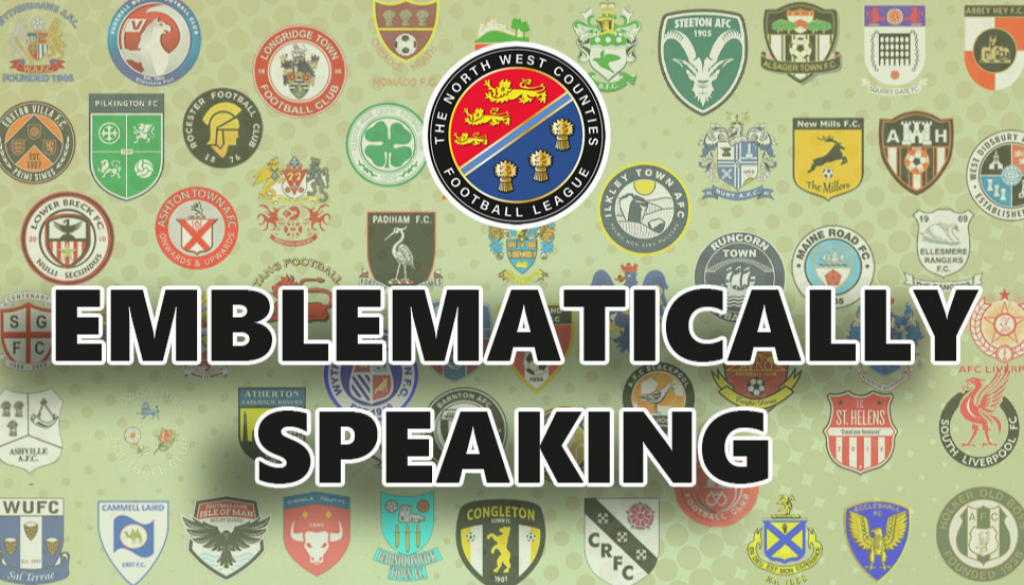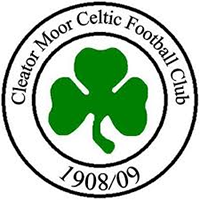
Emblematically Speaking - Cleator Moor Celtic
Tue 28th March 2023 | Cleator Moor Celtic | By Martin Fallon
In the introduction to this series of Emblematically Speaking we highlighted a number of features of the writing style, one of these was the curious punctuation often found within these short narratives.
Some “modern-day” educationalists rather eschew the concept of punctuation in written English as being largely irrelevant. For me, clearly, this is not so. Let me try a couple of sentences and see where it takes us.
Oh Well, shall we do something Green?
Oh Well, shall we do something, Green?
As we can readily see, these two sentences differ only in the addition of a comma in the latter. Does it matter? Yes it does I would contend in that these two sentences have completely different meanings.
I will leave the reader to work out a meaning for the latter of these two and concentrate this week’s offering on the first.
On we go to the emblem of Cleator Moor Celtic which is, of course, Green.
On the face of it we have quite a simple design of emblem here with a roundel displaying a shamrock in the centre with the name of the football club and year of formation around the outside. Looks familiar? It certainly does and the similarity with the emblem of a Celtic FC based in Glasgow is not entirely coincidental. Further, the playing colours of green and white hoops used by Cleator Moor Celtic are taken from the same design as worn by Celtic FC from the first decade of the 20th century.
So how do we link the demography of Cleator Moor at the time with the shamrock and an association, at least graphically, with Celtic FC? Let’s consider a couple of points:-
1) The shamrock is very much associated with Ireland.
2) Celtic FC have a historic association with the people of Ireland and Scots of Irish descent, both of whom are mainly Roman Catholic Many Irish people crossed the sea to Glasgow to work in the shipbuilding industry on the River Clyde.
The answer to this one lies in the geographical proximity of Cleator Moor to Ireland and the presence of several iron ore mines. The area was substantially populated by immigrants from the North Eastern counties of Ireland in the latter half of the nineteenth century coming across the water to work these mines, leading to the colloquial title of Little Ireland. So, in summary, in the case of Celtic FC and Cleator Moor Celtic we see migrant workers crossing the Irish Sea and establishing, via links to the Roman Catholic Church, football teams.
As we can see from the emblem, the club was formed in 1909 and this is an extract from the Cumberland Paquet dated September 2nd 1909 under the title “Football Prospects at Cleator Moor”
"Great interest seems to be centred this season in football on Cleator Moor. An Association club has been formed called the "Celts" and a field has been acquired near to Cleator Moor Railway Station. Practice has been in progress, and the executive have got together a promising lot of youngsters, and hope to be rewarded by the general patronage of the public”.
Students of the flora of these isles will maintain that a shamrock is simply a four leaved version of the three leaved clover plant and they would be right. A four leaved clover, whilst rare, is considered to be a harbinger of good fortune so could be considered to be highly appropriate to any sporting enterprise.
For those readers interested in the influence of Irish migration into Cumbria there is a book entitled “Culture, Conflict and Migration – The Irish in Victorian Cumbria” by Donald MacRaild which tells the story far better than I can.
With grateful thanks to Herbie Briggs of Cleator Moor Celtic who sourced much of the information used in this article.
 Emblematically Speaking - Cleator Moor Celtic
Emblematically Speaking - Cleator Moor Celtic
Tue 28th March 2023 | Cleator Moor Celtic
By Martin Fallon

In the introduction to this series of Emblematically Speaking we highlighted a number of features of the writing style, one of these was the curious punctuation often found within these short narratives.
Some “modern-day” educationalists rather eschew the concept of punctuation in written English as being largely irrelevant. For me, clearly, this is not so. Let me try a couple of sentences and see where it takes us.
Oh Well, shall we do something Green?
Oh Well, shall we do something, Green?
As we can readily see, these two sentences differ only in the addition of a comma in the latter. Does it matter? Yes it does I would contend in that these two sentences have completely different meanings.
I will leave the reader to work out a meaning for the latter of these two and concentrate this week’s offering on the first.
On we go to the emblem of Cleator Moor Celtic which is, of course, Green.
On the face of it we have quite a simple design of emblem here with a roundel displaying a shamrock in the centre with the name of the football club and year of formation around the outside. Looks familiar? It certainly does and the similarity with the emblem of a Celtic FC based in Glasgow is not entirely coincidental. Further, the playing colours of green and white hoops used by Cleator Moor Celtic are taken from the same design as worn by Celtic FC from the first decade of the 20th century.
So how do we link the demography of Cleator Moor at the time with the shamrock and an association, at least graphically, with Celtic FC? Let’s consider a couple of points:-
1) The shamrock is very much associated with Ireland.
2) Celtic FC have a historic association with the people of Ireland and Scots of Irish descent, both of whom are mainly Roman Catholic Many Irish people crossed the sea to Glasgow to work in the shipbuilding industry on the River Clyde.
The answer to this one lies in the geographical proximity of Cleator Moor to Ireland and the presence of several iron ore mines. The area was substantially populated by immigrants from the North Eastern counties of Ireland in the latter half of the nineteenth century coming across the water to work these mines, leading to the colloquial title of Little Ireland. So, in summary, in the case of Celtic FC and Cleator Moor Celtic we see migrant workers crossing the Irish Sea and establishing, via links to the Roman Catholic Church, football teams.
As we can see from the emblem, the club was formed in 1909 and this is an extract from the Cumberland Paquet dated September 2nd 1909 under the title “Football Prospects at Cleator Moor”
"Great interest seems to be centred this season in football on Cleator Moor. An Association club has been formed called the "Celts" and a field has been acquired near to Cleator Moor Railway Station. Practice has been in progress, and the executive have got together a promising lot of youngsters, and hope to be rewarded by the general patronage of the public”.
Students of the flora of these isles will maintain that a shamrock is simply a four leaved version of the three leaved clover plant and they would be right. A four leaved clover, whilst rare, is considered to be a harbinger of good fortune so could be considered to be highly appropriate to any sporting enterprise.
For those readers interested in the influence of Irish migration into Cumbria there is a book entitled “Culture, Conflict and Migration – The Irish in Victorian Cumbria” by Donald MacRaild which tells the story far better than I can.
With grateful thanks to Herbie Briggs of Cleator Moor Celtic who sourced much of the information used in this article.


